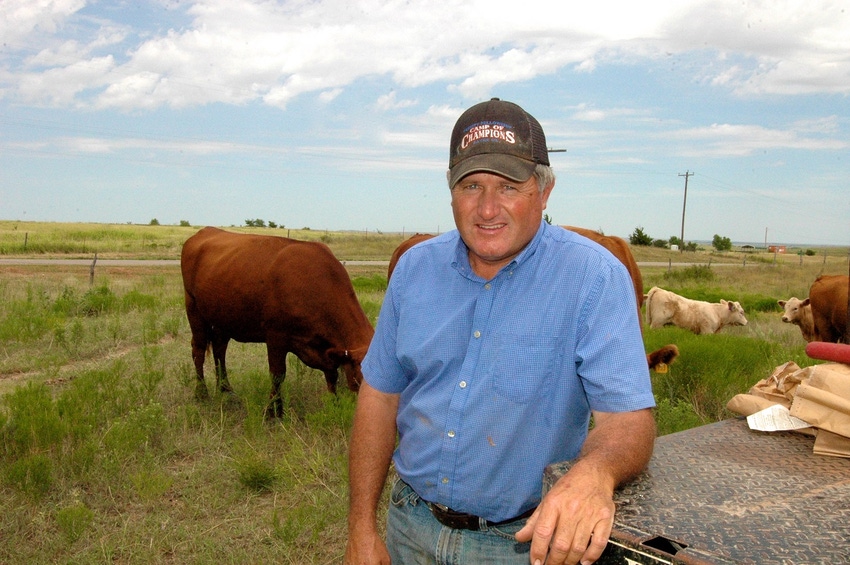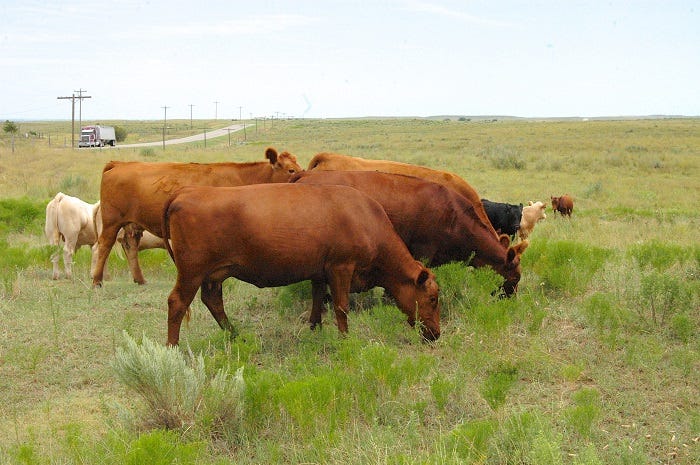September 18, 2018

By Larry Stalcup
As a seedstock and commercial producer, R.A. Bentley realizes there’s little room for error, especially when margins are tight. He knows that getting calves on the ground is essential for him and customers who buy his bulls. That’s why a strict regimen of "trich" testing is a must.
Trich, scientifically known as Trichomoniasis, is a venereal disease passed from a bull to a female during breeding (or vice versa). It can cause open cows and abortions. In worst-case scenarios, expected calving rates of 90% could easily drop to 50% or less.
It is caused by a tiny protozoan parasite, Tritrichomonas foetus. The parasite colonizes in a cow’s vagina and uterus. For bulls, it colonizes or lives in epithelial folds on the skin of the penis and prepuce.
“Trich can be economically devastating in a short period of time,” says John Wenzel, New Mexico State University extension veterinarian. “A susceptible cow bred by an infected bull will become infected with the organism and will generally abort, recycle three to five times, and then settle, infecting all bulls that breed her while she is infected.”
Bentley, who ranches at Buffalo, Oklahoma, makes sure none of that happens. He is an Angus, Red Angus and Charolais seedstock producer and also runs a commercial cowherd with about 300 females. He often buys calves from his bull and replacement heifer customers and runs them as stockers. In all, he’ll pasture about 1,500 stockers. He feeds out some of those cattle in a retained ownership program.
Bentley faced some rough roads in 2017. He suffered cattle and structure losses from the ferocious western Oklahoma wildfires. It set back his Angus and Red Angus seedstock program and didn’t do his commercial herd any favors. But his animal health program remained intact.
“With Trich, typically the bull side is what everyone worries about,” he says. “I’ve never dealt with the disease and plan not to. I take preventive efforts to keep it out of our herd. Any bull we sell – I get them tested. It is $50 to $60 per animal that’s well spent.
“It is as important to me as a semen test. That’s an everyday thing. I can’t in good faith sell one that has not been tested.”
Veterinarian Wenzel says when a bull contracts trich there is no response by the bull’s immune system so he does not develop any resistance to the organism.
“The trich organism lives on the surface of the penis and prepuce in small folds called crypts," Wenzel says. "The older the bull, the deeper and more numerous the crypts are, so it is easier for bulls 4 years of age or older to become chronically infected. However, younger bulls, as young as yearlings, can develop the infection. Some may become chronically infected.”
He says an infected cow that rebreeds will calve four to six months later than normal, with an accompanying loss of weaning weight. Many cows will not rebreed and will need to be sold as open cows. Wenzel lists these trich control measures:
Test all bulls at the end of the breeding season and cull any positives.
Test all incoming bulls that are added to the bull battery.
Do not share or lease bulls unless a trich prevention program is in place.
Do not add cattle from unknown herds or with unknown calving histories.
Keep fences in good repair to prevent exposure to neighboring cattle.
Communicate with neighbors regarding trich status.

Both cows and bulls can carry and spread the disease, although it usually clears from most cows' reproductive tracts, however bulls are the easiest control point.
Bentley says, “If my bulls get out into a herd of cows I don’t know, I quarantine them when I get them back until they can be tested by the vet. I lease bulls out. When I get them back, I get them tested. That cost is part of my negotiated leased bull prices.”
He stresses that if one of his bulls comes back and tests positive for trich, he notifies the producer who leased the bull: “He needs to know his herd is infected and needs to get square in the middle of it. It doesn’t need to be spread to four or five other herds.”
Wenzel says the most effective way to monitor trich status is to prioritize testing of mature bulls over that of yearling bulls, but says all sexually active bulls pose a risk. He encourages producers to contact their veterinarian for information regarding prevention and eradication.
Bentley says he prefers being on the offense when it comes to trich.
“We just sold a lot of bulls to a ranch in Arizona,” he says. “I got them all tested. My reputation is on the line.”
Vaccines can help in some circumstances
A commercial vaccine to control trich is available for use in female cattle, says John Wenzel, New Mexico State University Extension veterinarian.
This vaccine can be used in a prevention program, but label directions must be strictly adhered to since it has a very short duration of efficacy. The vaccine has been shown to have possible beneficial effects in preventing the disease in bulls, with more research being needed, Wenzel says.
Stalcup writes from Amarillo, Texas.
You May Also Like




